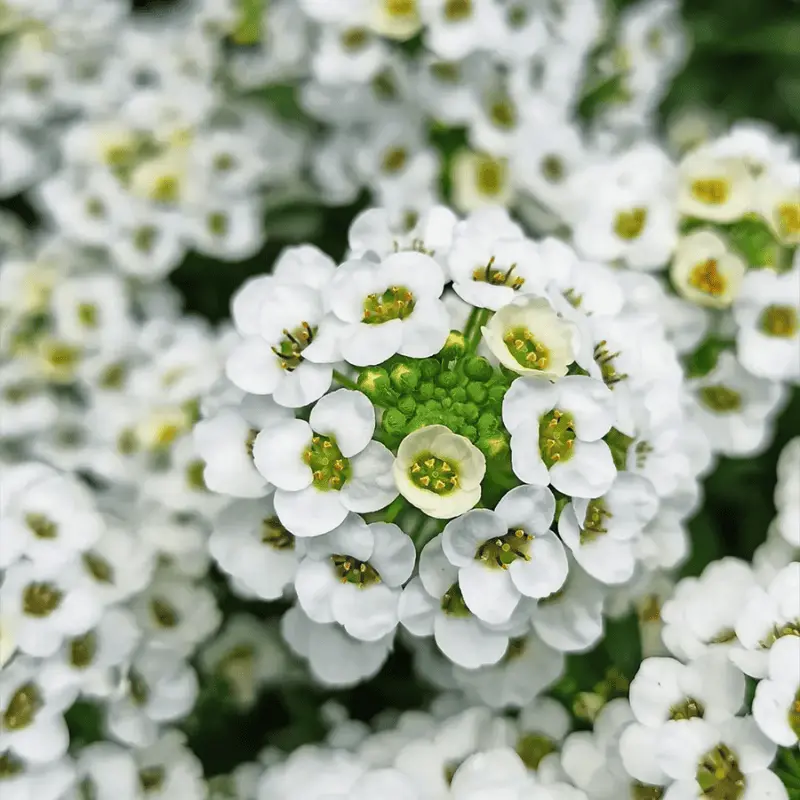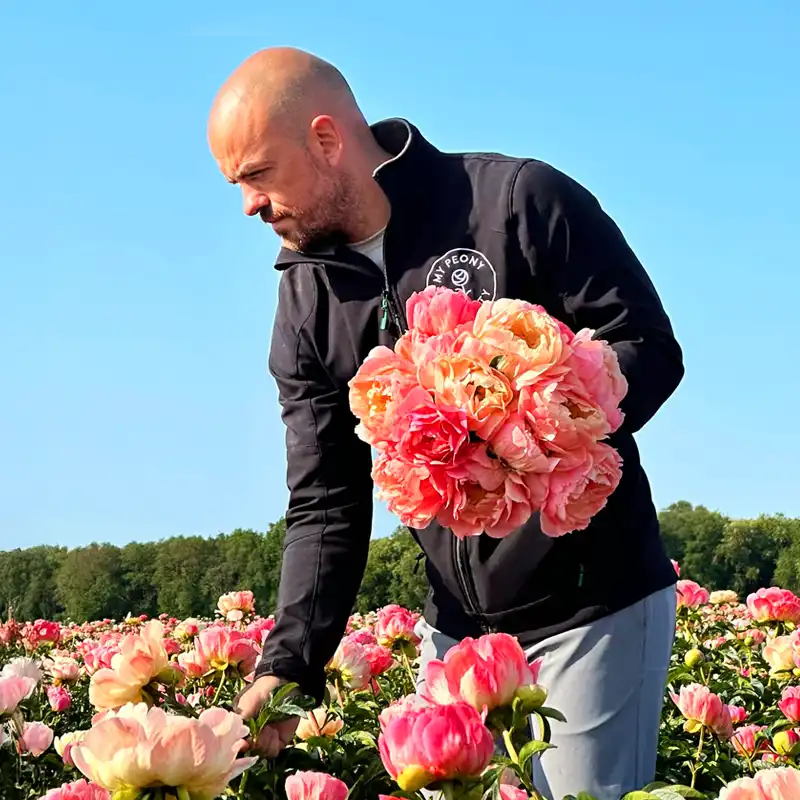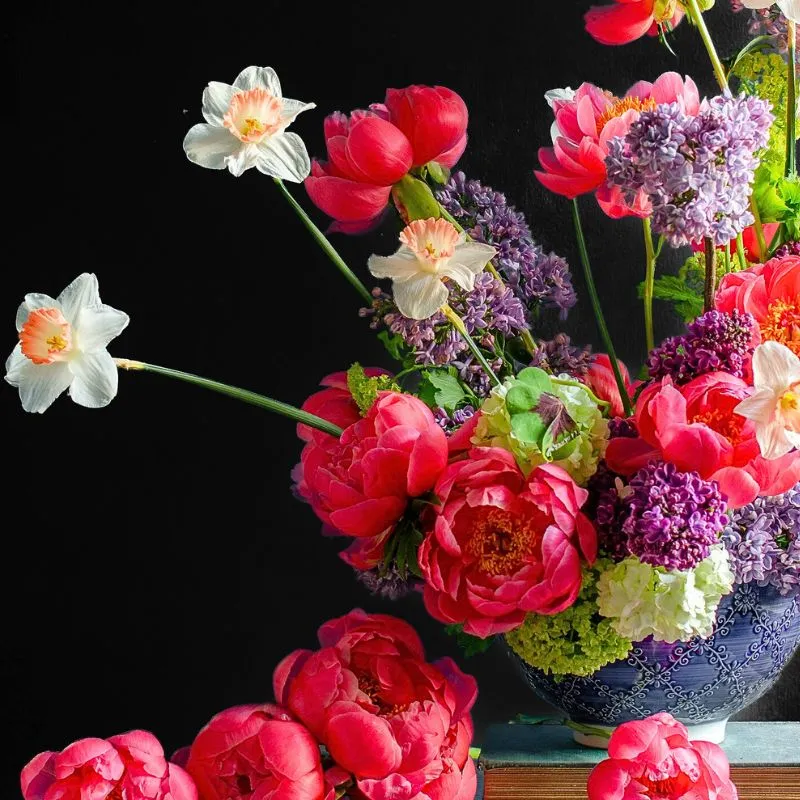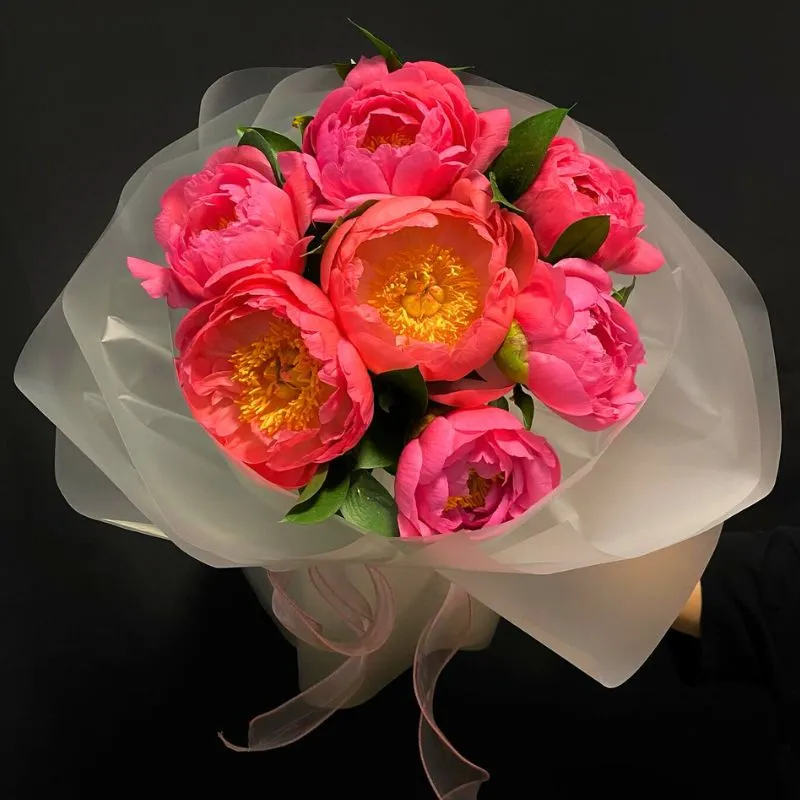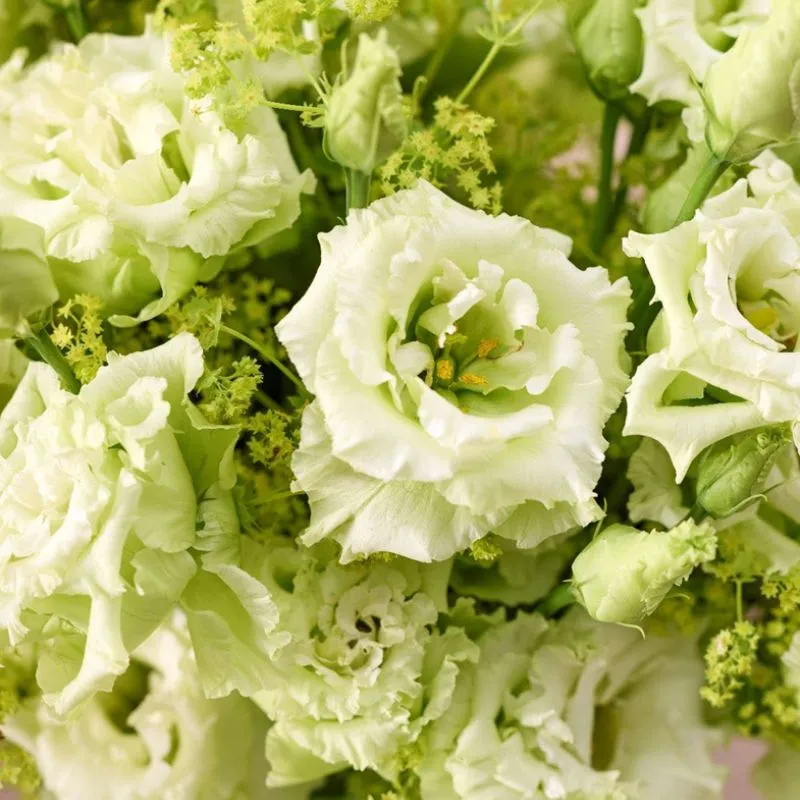When spring is in season and our mood calls for colorful and seasonal flowers, it is time to start thinking about peonies flowers. The peony if known to outrageouslt bloom from spring to summer - with impressive flowers and lush foliage all season long. It is about time to gather more background information about this perennial that easily takes your breath away.
Learn all you need to know to successfully grow peonies flowers, from choosing the right variety to proper planting, caring techniques, and handling common issues for thriving peony plants.
May Welcomes the Peony
When spring arrives, it brings along one of the most cherished blooms - peonies. Peony flowers bloom from late spring to early summer, filling gardens with impressive flowers and lush foliage. The peony season typically starts in May due to the plant's natural growth cycle and the ideal climate conditions. Peonies are perennial plants native to Asia, Europe, and North America, thriving in temperate climates with distinct seasonal changes. Here are the key factors that contribute to the blooming of peonies:

- Temperature: Peonies require a period of cold dormancy in winter, followed by warming temperatures in spring, to trigger their growth and flowering. As temperatures rise in late April and early May, peonies begin to grow and eventually bloom.
- Daylight: Peonies also require a specific amount of daylight to bloom. As the days get longer in spring, the increased sunlight prompts blooming.
- Rainfall: Moderate rainfall in spring provides adequate moisture for peony growth and development, but too much rain can cause the plants to rot, while too little can result in poor growth.
- Soil: Peonies prefer well-drained, fertile soil, which is readily available after the winter thaw.
While May is the most common month for peonies to bloom, the specific timing may vary depending on the location and climate. Some regions may see peonies blooming earlier or later, and different varieties have distinct blooming periods.
The Different Peony Varieties
Few plants can compete with the grandeur of peonies. However, their appearance are deceptively humble when still in bud form. But come May, peonies undergo an explosive transformation as their blooms unfurl to reveal layers of delicate petals. Herbaceous peonies are the most common type, perfect for making a statement in any garden, as they die back each fall and regrow in spring.

Tree peonies, on the other hand, are woody shrubs that bloom, before herbaceous peonies. Their flowers are larger, often as big as cabbages, and require minimal support. Intersectional peonies, also known as Itoh peonies, are hybrids that combine the best traits of both types, boasting robust stems and vibrant flowers.
Peonies come in a wide array of colors, including white, pink, red, and even salmon. Some have double sets of petals, while others have single rows, adding textural interest to the garden. Their versatility makes them a favorite among floral designers, often featured in stunning arrangements highlighting innovative uses of peonies.
The Origins of Peonies
The peony has a rich cultural history, originating from China, where it has been cultivated as early as 7th Century. It was placed under imperial protection by Emperor Yang Ti and later declared the national flower of China in 1903.

Peonies were imported to Japan around the 8th Century, where they quickly gained ornamental significance. Japanese horticulturists cultivated numerous peony varieties with pure shades of pinks, whites, and reds. Japan also has a long history with flowers, and they have their way of representing their art and emotions with flowers. Read more about Hanakotoba - the Japanese language of flowers.
"As Big as Cabbages"
Marco Polo already spoke of these "roses as big as cabbages"; symbols of wealth and honor, love, and feminine beauty. In Europe, until 1787, the medicinal virtues of the peony were known. The Europeans remained insensitive to its charms until the introduction of an ornamental variety in England by the East India Company.

Shortly after, in France, the Chinese Emperor offered specimens of a rare peony beauty to Joséphine de Bonaparte. She was completely seduced and made them the most famous flowers in the park of Malmaison in France. It was not until the 18th Century, through missionaries, that peonies began to reach the West before an Austrian botanist Joseph Francis Rock reintroduced them at the beginning of the 20th Century. Lemoine (1823-1911) made crosses of botanical species to obtain more and more sophisticated and robust hybrids, including the variety best known today, "Paenoia Lactiflora," also called the Chinese Peony.
Planting Peonies for Success
The best time to plant peonies is in the fall, about 6-8 weeks before the ground freezes. Fall planting allows the roots to be established well before winter sets in. Choose a sunny spot that receives at least six hours of sunlight. Peonies thrive in well-drained soil; areas with waterlogging should be avoided.
Space peonies 3-4 feet apart to ensure proper air circulation, which helps prevent disease and gives plants the room they need to grow vigorously. When planting bare root tubers, dig holes about 12-18 inches deep, adding organic matter for improved soil quality. Position the tuber with eyes facing upwards, no more than 1-2 inches below the soil surface, as deep planting can hinder blooming.

Cultivation of Peonies Throughout the Seasons
Peonies require particular attention, especially in their early years, to grow successfully and bloom to their fullest potential. During the first growing season, water peonies regularly to help them establish strong roots. Once established, they are somewhat drought-resistant but still benefit from occasional watering during dry spells.
In spring, use a balanced fertilizer to boost growth, but avoid excess nitrogen, which may lead to excessive foliage at the expense of blooms. Applying shredded bark or similar mulch around the base will retain moisture, regulate soil temperature, and suppress weeds, which is crucial for maintaining healthy growth.
Some peonies, especially those with heavy flowers, may need staking to support the blooms. Use wire tomato cages or stakes to keep the plants upright during bloom time. For herbaceous peonies, cut back the stems in late September to prevent disease and help the plant prepare for dormancy. Tree peonies, on the other hand, should be pruned lightly in spring to remove dead or damaged branches.

Peony Care Tips for Blooming Success
The ultimate reward for peony care is witnessing their beautiful blooms. Full sun is essential for most peony plants, and without sufficient light, they may produce fewer flowers. Peonies flourish in well-drained, slightly acidic to neutral soil, and adding organic matter like compost will enrich the soil and foster healthy growth. Fertilizing should be done sparingly, as over-fertilization can harm bloom production and weaken the stems. To maintain healthy plants, divide herbaceous peonies every 10-15 years. Dividing helps rejuvenate old plants and ensures abundant blooms.
Common Problems with Peony Plants
Though peonies are generally hardy, they are not immune to problems. Powdery mildew is a common issue that manifests as a white powdery substance on the leaves, often seen in humid conditions. Good air circulation and proper spacing can help prevent this problem.
Aphids, slugs, and snails can also damage peonies, so it is important to inspect plants regularly and use organic pest control or physical barriers as needed. Heavy blooms may cause stems to droop, and staking taller peonies is recommended to provide support and prevent breakage.

Peony Pest and Disease Control
Maintaining healthy peony plants involves being proactive about pests and diseases. Use integrated pest management techniques for common pests like aphids and slugs. Powdery mildew can be managed with fungicides and by maintaining proper spacing for airflow. Physical barriers such as traps can deter pests like snails and slugs, keeping peony plants healthy and vibrant.
Pruning and Dividing Peonies
Proper pruning and dividing are essential for maintaining healthy peonies and ensuring future blooming. Herbaceous peonies should be pruned in late fall, cutting the stems to within a few inches of the ground. Tree peonies, unlike their herbaceous counterparts, require only light pruning in the spring to remove dead or damaged wood. Dividing herbaceous peonies every 10-15 years helps to keep them vigorous and blooming. Carefully dig up the root clump and use a sharp knife to create divisions, ensuring each has at least three eyes.
Growing Peonies in Your Garden
Peonies thrive in well-ventilated spots, which helps minimize the risk of fungal diseases. Their rich green foliage remains attractive even after blooming, making them excellent mixed-border plants. Plant peonies alongside other perennials for a vibrant garden display. Peonies also make for stunning cut flowers, often used in elaborate floral designs, showcasing the versatility of these blooms in both garden and floral arrangements. Cut them while buds are still tight but soft, allowing them to bloom indoors for a beautiful display.
Here are some more tips that would come in handy to help you maintain a beautiful garden year-round.

Planting Peonies in Containers
If you lack garden space, peonies can also be successfully grown in containers. Use a container at least 12-18 inches deep to accommodate the root system. Ensure the container has drainage holes and use a well-draining potting mix. Container-grown peonies require regular watering, but avoid overwatering as they dislike soggy roots. During winter, move the container to a sheltered spot to prevent root damage from severe cold.
Enjoying Peonies Bloom
There is much to enjoy about peonies beyond their beauty. Harvest peony flowers for indoor arrangements by cutting them in the early morning when buds are still closed but soft. You can also dry peonies to enjoy their beauty throughout the year—simply hang the blooms upside down in a dark, dry location until they are fully preserved.

Capture the splendor of peonies each season, as their layers of petals and rich colors make them a favorite subject for photographers. The joy of growing peonies extends beyond the garden, with their captivating fragrance and stunning appearance providing endless enjoyment. That said, let's sum it up saying 'may your peonies bloom beautifully year after year!'. Happy gardening!


